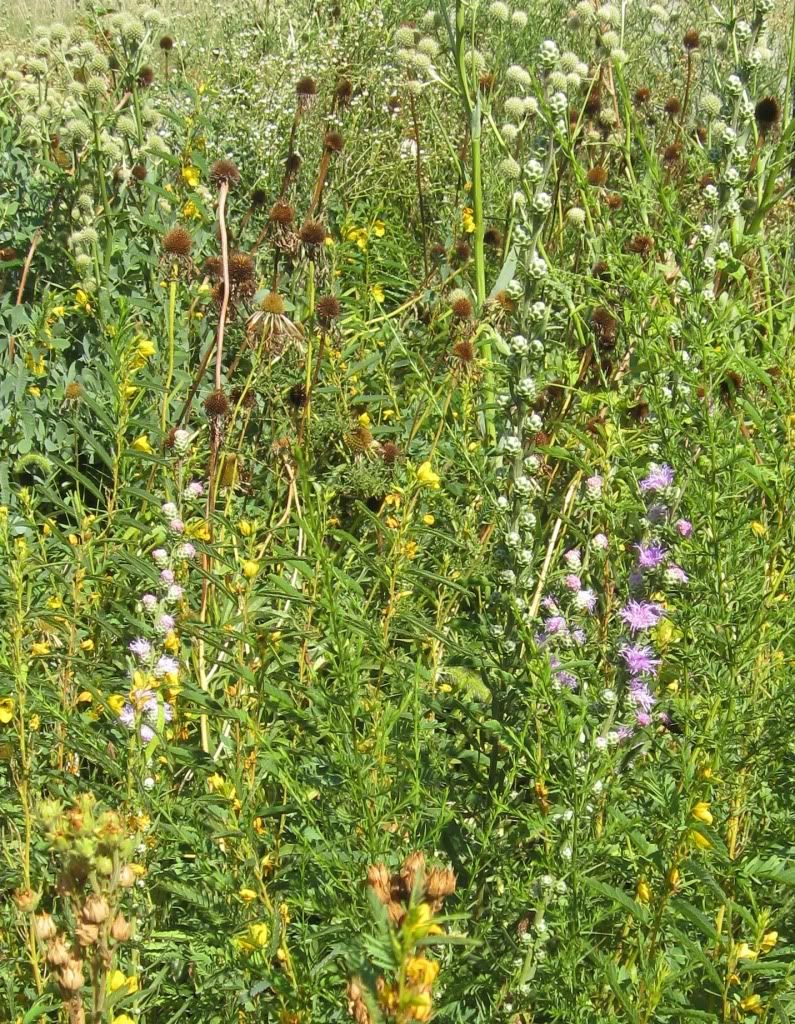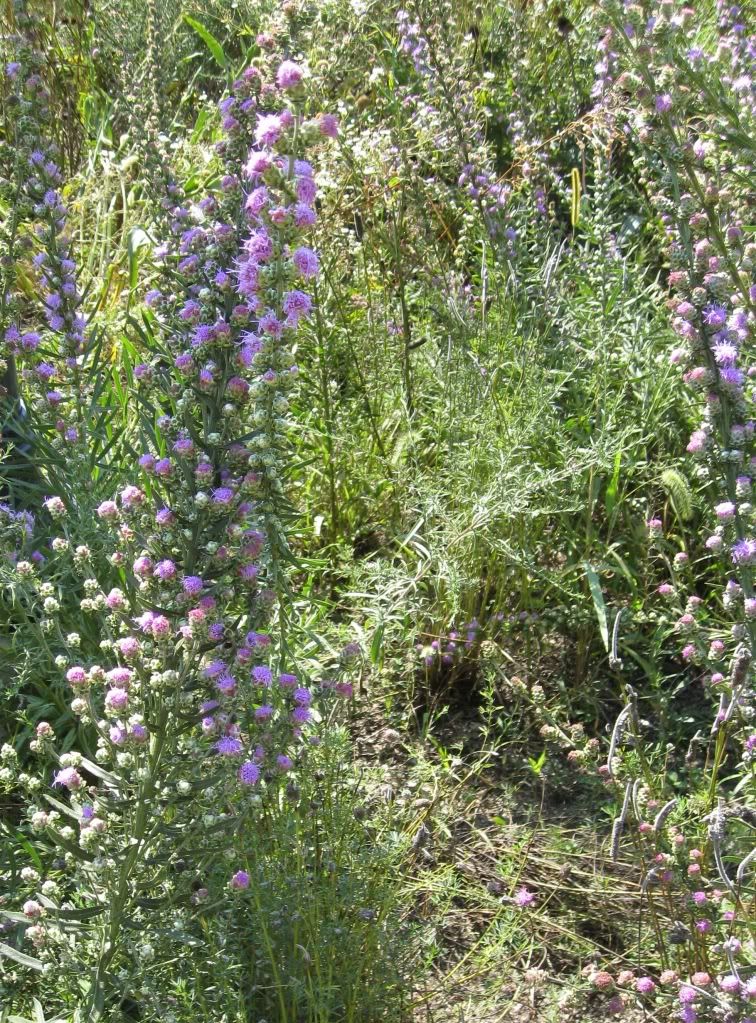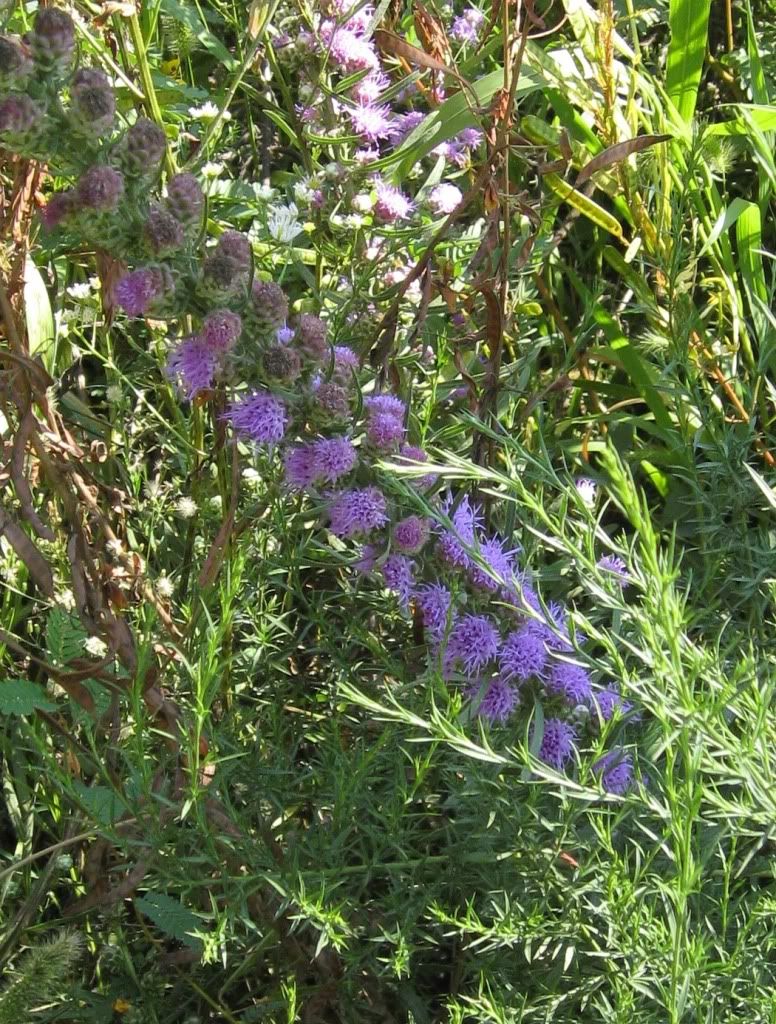Blazing star used to be “abundant in native prairie landscapes” but “have been reduced to fragmented populations due to conversion of prairie to agricultural fields and urbanization.” All of the photographs posted below were taken at a small prairie planting near Gray’s Lake in Des Moines.
This is an open thread; all topics welcome.
I’ve been impressed this summer by the diversity in one tiny prairie planting on the south side of Gray’s Lake. Within this triangle, approximately 15 feet long on each side, purple coneflowers and other early bloomers were abundant in June and July. By late July, the coneflowers were done (see the brown remnants here), and a few of the blazing stars were starting to bloom:
The yellow flowers in that photo are partridge pea.
According to the Lady Bird Johnson Wildflower Center at the University of Texas at Austin, there are 20 blazing star species native to North America. Some are difficult to distinguish, but I believe these photographs show rough blazing star (Liatris aspera), also known as tall blazing star, tall gayfeather, and button snakeroot. In Wildflowers of the Tallgrass Prairie, Sylvan Runkel and Dean Roosa write of rough blazing star,
The inflorescence is a long raceme composed of up to 150 heads. Each individual head consists of up to 40 flowers and has numerous bracts. The flowers are rose-purple, but occasionally white forms appear. Prior to opening, the flower head has a buttonlike appearance, hence, one of its common names.
This photo shows a lot of the “buttons” as well as many flower heads in full bloom.
Here’s a closer look at the blazing star, with partridge pea on the left side of the picture.
The scraggly looking blazing star flowerheads reminded me of horsemint (bee balm, wild bergamot) the first time I saw them. But horsemint is in the mint family; blazing star is in the aster family. Horsemint flowerheads are at the top of the stalks, while blazing star flowerheads are densely clustered along the stalk.
Referring to the prairie blazing star (Liatris pycnostachya), the Nature Conservancy’s website notes,
The prairie blazing star blooms during the summer months to early fall, between late July and September. Their erect stands of tall pink to dark lavender spikes are hard to miss. Though found naturally in the small native remnants of our prairie lands, the blazing star does remarkably well in home gardens. Its unusual characteristic of blooming from top to bottom makes the blazing star a good choice in fresh-cut floral arrangements. By merely pruning the top dead flowers, fresh flowers are just a snip away.
Rough blazing star also blooms from the top down, so the same advice applies.




